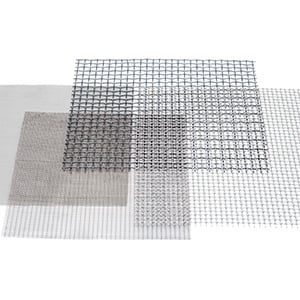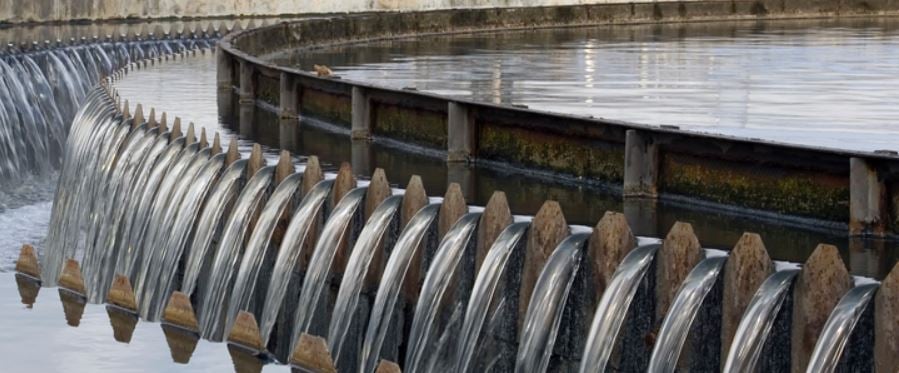How Woven Wire Mesh Impacts Water Treatment
Water is an essential part of everyday life, no matter who you are and where you live. Because of its importance, water must be regulated heavily to ensure it is safe for the environment and human consumption.
This critical need for safe water is why we see water treatment facilities all over the globe. But to provide safe water, these facilities must have the proper material put in place to ensure harmful characteristics of water found in natural sources are cleansed before being distributed.
This is where woven wire mesh excels.
W.S. Tyler is a wire mesh supplier that has provided countless industries with accurate filter wire cloth solutions for over 150 years. We strive to leverage the experience within our four walls to help engineers within the water treatment industry generate crystal clear water.
And with that, we wrote the following article to highlight woven wire mesh’s role in the water treatment process. You will learn:
- The importance of accurate water treatment
- How woven wire mesh is defined
- The impact woven wire mesh has on water treatment
- The things you should consider when designing wire mesh for water treatment
Why Is Water Treatment Necessary?
While most of the world is covered in water, only a fraction (approximately 1%) is useable in terms of drinking water and industrial uses. This is because various pollutants feed contaminants into the oceans, seas, and lakes all over the globe.
These contaminants can be metallic particles, microbes, and other foreign debris, all of which can be harmful to humans and the environment.
Water treatment operations are put in place to remove these contaminants and provide a supply of clean water.
What Is Woven Wire Mesh?

Woven wire mesh, or wire mesh for short, is a metallic cloth that is constructed out of a predetermined number of metallic wires that are interlocked together, forming either rolls or sheets with particular weave patterns. Using a centuries-old weaving technique, tension is created at every wire intersection, ensuring the pore openings remain accurate.
So, How Does Woven Wire Mesh Fit the World of Water Treatment?
Filtration is an integral step in any water treatment operation. It allows water treatment facilities to separate the various solid contaminants found in untreated water.
With an abundance of filter media at your fingertips, from wedge wire to metal fiber felt, many water treatment engineers often implement woven wire mesh into their operation.
The reason? Well, it comes down to the fact that woven wire mesh can be customized to fit virtually any water treatment application.
The weave pattern, pore openings size, wire diameter, width, and length, all the way down to the number of wires in the weave, can all be methodically calculated to accommodate the needs of your operation. But despite its rigid stainless steel profile, woven wire mesh can be formed into a specific shape to fit the filtration housing of your equipment.
While the engineering that goes into creating a wire mesh solution ensures you get a bang for your buck, its ability to be cleaned adds additional cost savings as it reduces filter replacements.
How Do I Implement Woven Wire Mesh into My Water Treatment Process?
To ensure you achieve desirable wire mesh filtration, there are several things you must keep in mind. First and foremost, woven wire mesh can be altered to filter a particle size range of 4” down to 5um.
With that in mind, it is critical that you have a clear understanding of the materials you will be filtering. This means you must know the size, shape, chemical composition, density, charge, abrasiveness, strength, and flocculation of the continent particles.
But you must also consider the properties of the water being filtered as well when designing a woven wire mesh solution. Specifically, you must know the density and pH level of the water before being filtered.
NOTE: As the parameters of your wire mesh must be accurate to perform, it is critical that you select a mesh supplier that can back any wire mesh performance claims.
Stop Contaminants in Their Tracks with the Suitable Wire Mesh Alloy
Water treatment is a critical practice, as it was established to ensure the water we use is safe and free of any unwanted contaminants. Woven wire mesh is widely used throughout the water treatment industry as it delivers pore openings that are accurate and durable.
This allows for dependable decontamination of water with prolonged timeframes between screen replacement.
But to better the lifespan and performance of your wire mesh, it is vital that you understand what alloy will offer the best performance-to-cost ratio. This knowledge will guarantee you are making the most of the capabilities of woven wire mesh and improve the efficiency of your operation.
W.S. Tyler has been a prominent woven wire filter cloth supplier for over 150 years and is here to help you build confidence in your wire mesh so you can reallocate time towards another aspect of your water treatment process.
Explore the following article and discover what wire mesh alloy you should use to weave your next wire mesh solution:
About Ronnie Brown
Ronnie is the Content Writer for W.S. Tyler and has four years of experience as a professional writer. He strives to expand his knowledge on all things particle analysis and woven wire mesh to leverage his exceptional writing and graphic design skills, creating a one-of-a-kind experience for customers.




